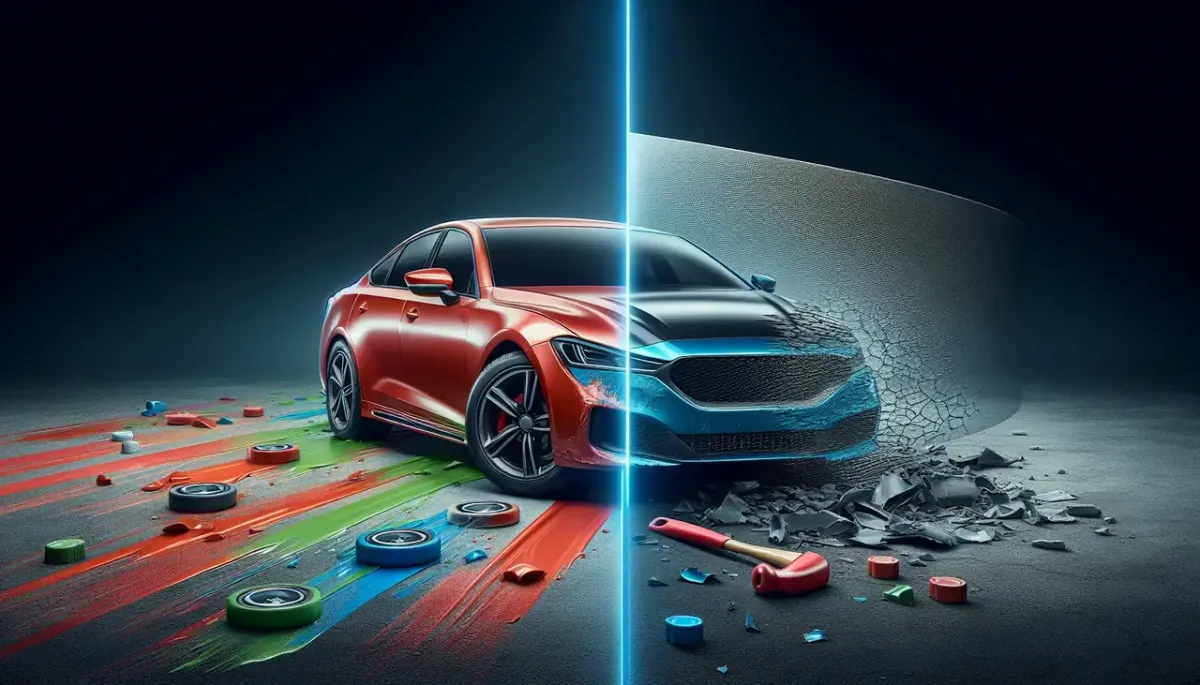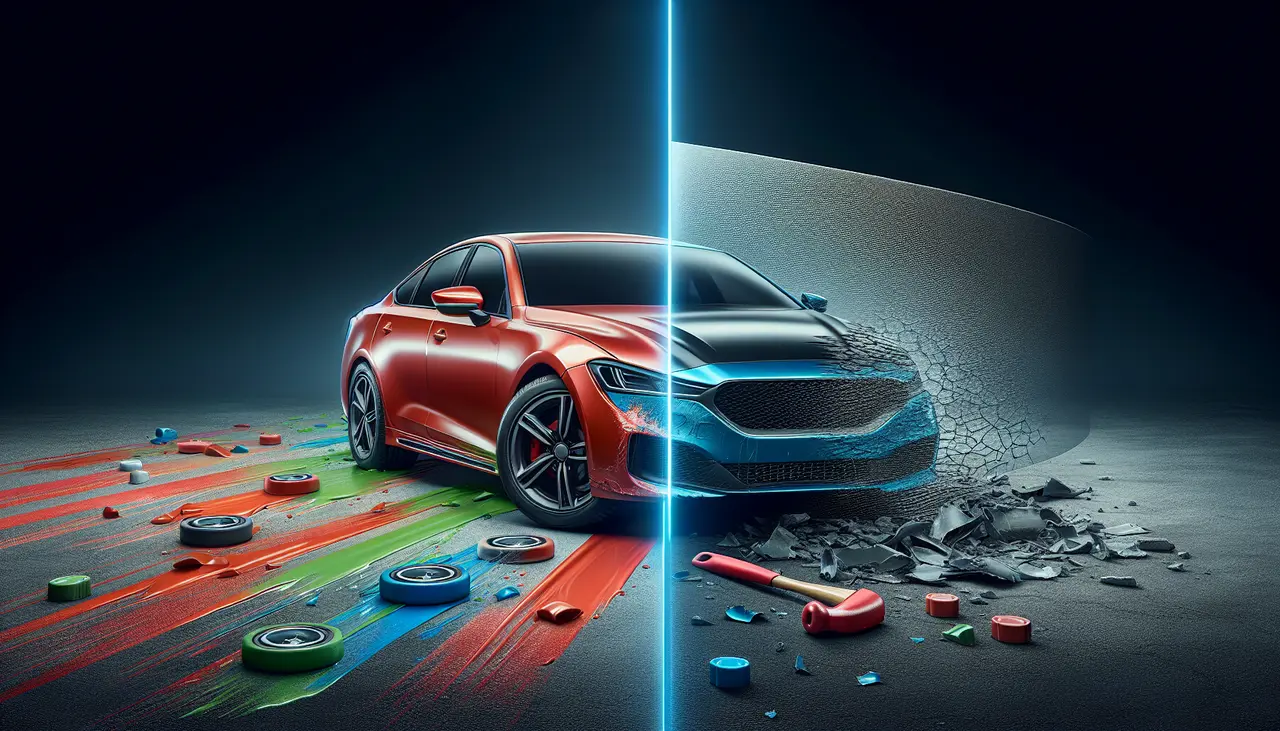My Awesome Detailer, LLC
My Awesome Detailer, LLC's Blog
"Auburn Alabama's #1 Resource for Ceramic Coating & Auto Detailing Information"

Top-Rated & Reviewed!

Why Paint Protection Film is a Must-Have for Every Car Owner
Introduction to Paint Protection Film
Paint Protection Film (PPF) is like armor for your car. This thin layer, almost invisible, sticks right to your car's paint, shielding it from all sorts of trouble—scratches, stains, and even small dents. It's not magic, but it's pretty close. Think of it like sunscreen for your car. Just like how sunscreen protects your skin from harmful UV rays, PPF keeps your car's paint job from fading under the sun's harsh glare. Now, you might wonder, "Do I really need this?" Well, if you care about keeping your car looking fresh out of the showroom for as long as possible, the answer is a solid yes. Whether you're zipping through city streets or cruising down country roads, hazards are everywhere. We're talking about bird droppings, tree sap, road salt, and even those tiny, pesky rocks that seem to find their way onto every road. PPF acts as a barrier, so these nuisances don't make a direct hit on your car's paint. Plus, the best part? It's almost like your car is wearing an invisible cloak. You won't even notice it's there, but it'll be working overtime to keep your ride looking sharp. So, let's gear up and dive deeper into why PPF might just be the best sidekick your car ever had.
The Basics of Paint Protection Film
Paint Protection Film, or PPF, is like a superhero costume for your car. It’s a clear, durable film that sticks right on top of your car's paint. Imagine a thin, almost invisible layer that guards your car against scratches, chips, and even the harsh effects of the sun. It’s made from a type of plastic called urethane, known for its toughness. Applying PPF is like giving your car an invisible shield, protecting it from the everyday wear and tear of driving, especially from things like gravel and road debris that can cause nicks and scratches. What’s cool is it also keeps your car looking newer for longer by safeguarding its original paint. Whether you're driving through a rugged terrain or just parked under the sun, having PPF means worrying less about what's hitting your car. It’s a smart move for any car owner who wants to maintain their car’s value and keep it looking sleek.
Benefits of Applying Paint Protection Film on Your Car
Paint protection film, or PPF, is like a superhero cape for your car. It stands guard against scratches, chips, and stains that can hit your car's surface. Think of it as a shield that fights off everyday wear and tear. Applying PPF means you're locking in that showroom shine, making your car look newer for longer. This isn't just about looks; it's also about value. A car with well-maintained paint will have a higher resale value than one with a scratched or faded exterior. Additionally, PPF acts as a barrier against the harsh effects of the sun and acidic bird droppings, which can damage your car's paint over time. Another plus? It saves you money. With PPF, you'll spend less on paint repairs and touch-ups. So, investing in paint protection film is a smart move for any car owner who wants to keep their ride looking fresh and maintain its value without breaking the bank on upkeep.
The Durability and Longevity of Paint Protection Film
Paint protection film is like armor for your car's paint. It defends against scratches, chips, and stains that can happen from road debris, bird droppings, and harsh weather. When properly applied, this film can last between 5 to 10 years. The key to its durability lies in the film's top layer, which is designed to self-heal when exposed to heat. This means minor scratches can disappear on a sunny day. Remember, the life span of the film also depends on factors like the quality of the film you choose and how well your car is maintained. Regular washes and keeping your car away from harsh conditions can extend the film's life. So, investing in a quality paint protection film can save you money and keep your car looking fresh for years.
How to Choose the Right Paint Protection Film for Your Car
Choosing the right paint protection film (PPF) for your car is simpler than you think. First, consider durability. You want a film that withstands scratches, dirt, and UV rays to keep your ride looking fresh. There are options that promise up to 10 years of protection. Next, look at clarity. A good PPF should be virtually invisible, not changing the color or texture of your car's paint. Some films have self-healing properties, meaning minor scratches can disappear with heat exposure. Lastly, consider the installation process. It's best to go with a professional installer to ensure the film is applied perfectly, without bubbles or misalignments. Keep in mind, quality comes at a price, but think of it as investing in your car's future. Different brands offer various levels of protection, clarity, and longevity, so research, read reviews, and maybe consult with a pro to find the best fit for your vehicle.
The Application Process of Paint Protection Film
Getting Paint Protection Film (PPF) on your car might sound fancy, but the application process is pretty straightforward. First, the car's surface is cleaned meticulously. Every bit of dirt and grime must go because even the smallest particle can ruin the smooth look of the film. After cleaning, the surface might be clayed and polished to ensure it's flawless.
Next, the film is carefully measured and cut to fit your car's specific parts like the hood, bumper, and mirrors. It's a precision job; the film must match your car's curves and edges perfectly.
Then, comes the application. The technician sprays a soapy water solution on the car and the adhesive side of the film. This liquid magic allows for the film to be moved around and adjusted without sticking permanently right away. With the film in place, they squeegee out the water and air bubbles underneath, making sure the film sticks smoothly to the car.
Finally, the film is left to dry, and voila, your car's paint is now protected against scratches, chips, and UV rays. It’s like giving your car an invisible shield, ensuring it stays looking new for longer. Plus, it's a relief not having to worry about every little thing that might otherwise damage your car’s paint job.
Maintaining Your Paint Protection Film to Ensure Maximum Protection
Maintaining your Paint Protection Film (PPF) is straightforward but vital to ensure it keeps your car's paint looking fresh. First, keep it clean. Wash your car regularly with a soft cloth and mild soap. Avoid abrasive cleaners that can scratch the film. Next, immediately remove any stains like bird droppings or tree sap. These can eat through the PPF if left too long. Waxing the film can add an extra layer of protection but make sure the wax is PPF safe. Avoid waxes with petroleum distillates or that promise to restore color.
Lastly, keep sharp objects and abrasive materials away from the film. Even though PPF is tough, it's not indestructible. If you notice any peeling or lifting edges, get it fixed promptly. Ignoring it can lead to more significant issues down the line. Simple, right? Take care of your PPF, and it will take care of your car's paint, keeping it looking brand new for years to come.
Paint Protection Film vs. Other Car Protection Options
When weighing your options for keeping your car's paint job looking fresh, you'll find that paint protection film (PPF) stands out against other car protection choices like ceramic coatings or wax. PPF is a clear, durable film applied to the exterior of your car to shield its paint from scratches, chips, and stains caused by road debris, bird droppings, and the sun's harsh UV rays. Unlike ceramic coatings, which provide a hard protective layer but can't match the physical barrier PPF offers against impacts, PPF acts like a car's bodyguard. Wax, on the other hand, might give your car a nice shine but falls short on lasting protection, wearing off in a few months and doing little to stop physical damage. In short, if you're looking for something that gives comprehensive protection and keeps your car looking newer for longer, PPF is your best bet. It may come with a higher upfront cost compared to ceramic coatings or wax, but the investment pays off by preserving your car's appearance and value over the years.
The Cost of Paint Protection Film: Is it Worth the Investment?
Paint protection film might seem like an extra cost, but when you look at the long-term benefits, it's a smart investment for any car owner. So, how much does it usually cost? Well, the price can vary widely depending on a few key factors including the size of your car, the type of film you choose, and who installs it. Typically, you're looking at anywhere from $500 to $2,000+ for a high-quality paint protection job. It might sound steep upfront, but think about this: the film shields your car's paint from scratches, dings, and UV damage. This means your car stays looking newer for longer, which can save you money on paint jobs and increase your car's resale value down the line. Essentially, investing in paint protection film means you're paying a bit now to save a lot later.
Final Thoughts: Why Paint Protection Film is Essential for Car Owners
Wrapping it up, investing in paint protection film is a no-brainer for every car owner out there. It's your best bet against scratches, chips, and the sun's harmful rays that can fade your prized possession's paint job. Think about it, you put on sunscreen to protect against UV damage; your car deserves the same kind of protection. The film acts like a barrier, taking the hit from road debris, bird droppings, and tree sap that can mar your car's finish. Over time, this translates to maintaining your car's aesthetic appeal and resale value. Let's be real, a car with a pristine exterior fetches a higher price in the market than one with a paint job that's seen better days. Plus, considering the cost of a full paint job, paint protection film is an investment that pays off by saving you money in the long run. Bottom line, if you love your car and want to keep it looking its best, paint protection film isn't just an option; it's essential.

My Awesome Detailer was founded with one mission: to bring elite-level vehicle protection and detailing to Auburn, AL and beyond.
Since day one, our focus has been delivering long-lasting paint enhancement, value retention, and top-tier appearance protection —with zero compromises.
We believe that true automotive care starts with clear communication and customized solutions, tailored to the specific needs of each vehicle and owner. From professional-grade ceramic coatings and self-healing paint protection film to precision paint correction and full-vehicle detailing, every service we offer is designed to elevate, protect, and preserve your investment.
At My Awesome Detailer, you don’t just get a clean car—you get long-term peace of mind and a finish worthy of a showroom spotlight.
Contact Info & Address
2709 Frederick Road, Opelika AL 36801
(334) 650-6499
Working hours
Monday: 8am-5pm
Tuesday: 8am- 5pm
Wednesday: 8am - 5pm
Thursday: 8am - 5pm
Friday: 8am - 5pm
Saturday: 8am-5pm
Sunday: Gone Fishin'
All Services by Appointment Only
Map
@ 2025 Copyright. MAD, LLC All rights reserved.

